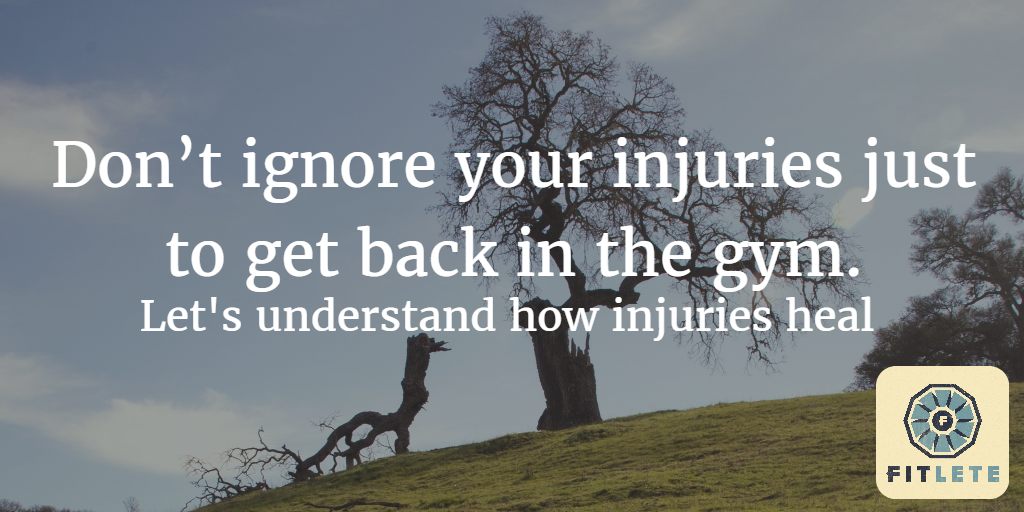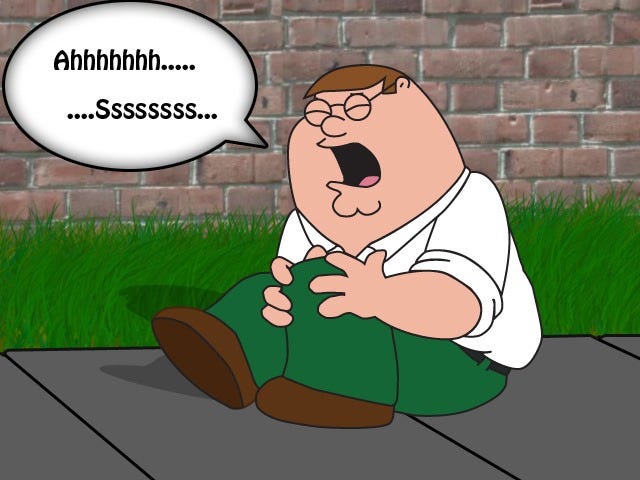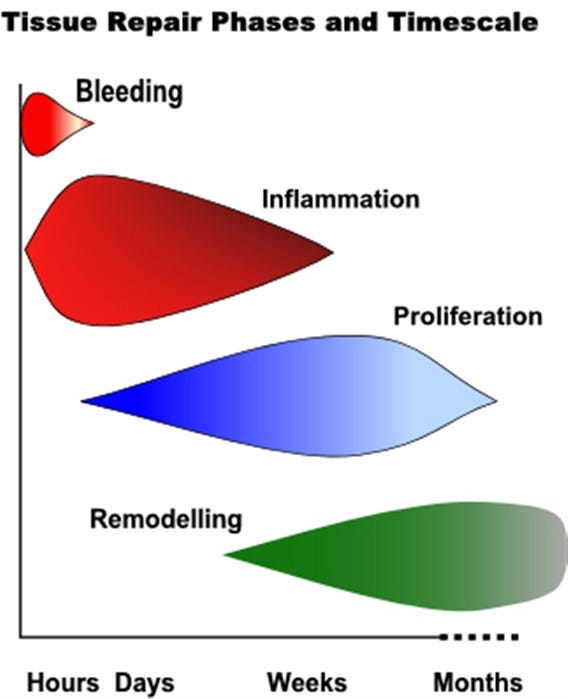Got a broken leg?…don’t ignore your injuries to get back in the gym!
I am sure that at some point in your life there has been a moment where you walked, ran, fell, pushed, pulled ,sneezed or coughed followed by a moment to yourself where you said “ OUCH! THAT HURT!
After the initial pain has settled down a little bit you start to think; “That hurt, and I hope it doesn’t take long to heal. I will throw some ice on it, take a week off, and then I will probably be fine.” Fast forward through the week of icy hot, Advil, maybe 20 min of an ice-pack, and you’re ready to jump back into exactly what you were doing before your little mishap, right? Probably not, but if this sounds like your post injury routine we need to have a talk.
Most people do not understand the healing process that happens after an injury no matter how big or small. Before I go on further, let me just say I am not a doctor so if you are hurt, and have been hurt for a while stop reading this, and go see a doctor. It’s that simple.
The timeline to your healing process all depends on the extent of the injury, size, type, location etc.
Here is a general visualization of the healing process of an injury
THE INFORMATION BELOW WAS SIMPLIFIED FOR YOU FROM ONE OF MY FAVORITE RESOURCES THERAPEUTIC EXERCISE FOR MUSCULOSKELETAL INJURIES BY PEGGY A HOUGLUM
To easily understand the healing timeline it has been categorized, and broken up into three basic phases: Inflammation, Proliferation, and Remodeling (shown above). These phases do not have a “cookie cutter” timeline of when one ends, and when the other begins it’s more of a blended continuous process progressing to the end.
Here is how to understand the healing phases a bit better.
Inflammation Phase — (approx. 0–5 days) this is the phase majority of people want to be over with as soon as possible.
Without this phase the injury could not heal.
The body attempts to stabilize the injured site by bringing white blood cells and chemicals to the injured area which produces the common signs and symptoms of injury (puffy, redness, pain, warm feeling and loss of normal function.)
Type 3 collagen has begun to be laid down. More erratically placed and not very strong. Think of this like the scab that forms over a small cut on your arm.
The goal is to allow inflammation to happen so we can start the healing process but, you can manage some of the symptoms of it by using R.I.C.E.( Rest, Ice, Compression, Elevation)
If you try and eliminate the inflammation all together or “work through it” you can prolong this stage and end up making a relatively short recovery really long, annoying and actually bad for you. That is why you might find that most doctors only prescribe things like advil and tylenol for pain, and not for healing.
Proliferation Phase- (approx. 3–21 days) Rapid increase in production of parts promoting healing.
The length of this phase depends on the extent, type, and location of the injury
Increase of new blood vessels to the area, and granulation (connective tissues)
This is important in the formation of scar tissue
Type 3 Collagen is continued to be produced ( seen as early as 48 hours and produced for close to 2 weeks in some cases)
Late in this phase strong type 1 collagen can begin to replace the weak type 3 collagen. Think of the type 3 like pencil on paper and the type 1 like a sharpie.
The goal of this phase is to remove dead tissue/debris and improve circulation to help with healing.
Often time’s pain has subsided a good amount later in this phase. Most think that the absence of pain as the “OK” to getting back to normal function, and begin doing the same things as before the injury…BUT WE NEED TO BE PATIENT!
Remodeling Phase-(apprx. 7 days- 1 year+)
Type 1 collagen takes over as the dominant collagen produced and type 3 collagen is destroyed, and replaced by type 1.
Type 1 collagen is stronger, and arranged in an aligned and organized parallel pattern for better tensile strength.
Scar size has reduced and become less noticeable.
The goal here is to stabilize the injury, and slowly return to normal functioning.
Injuries at or near joints can actually be inhibited by the formation of scar tissue which is why seeing a doctor can help get you, and keep you healthy!
Those are general guidelines of injury healing, but these timelines are not 100% concrete because different body tissues heal, or repair at different rates.
Now here will be a timeline of how long an injury to Tendons, Ligaments, Muscles, Cartilage and Bone can take to recover. Remember an injury to one area can affect different parts of the body so while recovery times are given, sometimes return to normal function can be varied.*
Tendons
Connects muscle to bone. Often directly affects other structures while healing in a negative manner if not handled properly.
Healing time: 40 WEEKS- 1 YEAR to about 85%-95% of strength levels.
Ligaments
Connects bone to bone. Some heal easier than others: think of an ACL…will not typically heal on its own but will in others (i.e. high ankle sprain.)
Healing time: 40 WEEKS -1 YEAR to near normal strength.
Muscles
Has tendons at origin and insertion points. Have satellite cells that actually regenerates in smaller injuries…think of exercising for bigger muscles. But larger injuries will produce scar tissue.
Healing time: 6 WEEKS- 6 MONTHS.
Cartilage
Hyaline cartilage cushions joints, Fibro-cartilage transfers loads between ligaments tendons and bones. Does have some regeneration qualities depending on a lot of other factors.
Healing time: A MINIMUM OF 6 MONTHS to regain normal appearance.
Bone
Connected through the body through all the other structures making joints. Has the properties of regeneration but will do so in whatever way it can. Think of a doctor having to re-break your broken nose to set it properly and wearing casts.
Healing time: fracture heals around 3–4 MONTHS and normal strength AT 12 WEEKS
POINTS TO TAKE HOME:
Listen to what your body is telling you (to a point)
Remember your body is not a machine so, give it some time to recover.
Ease your way back into your exercise routine even if that means taking a hit to your ego and using lighter weights.
Focus on your lifting technique, because it could be the reason you were hurt in the first place.
Make sure your routine is diverse enough in exercise choices to avoid overuse complications.
Educate yourself (i.e. ask a question or two)… I mean it is the only body you will ever have.
See a doctor or specialist- just someone qualified and trustworthy. Again, one body for the rest of your life. Make sure you treat it that way.
Would you rather miss a couple of weeks of bicep curls or miss the ability to move your arm pain free?
Not all injuries heal the same way and everything you classified as a “TWEAK” can range from minor to pretty darn serious.
Originally published at fitletes.com

Thanks For taking the time out of your day to read.
If you enjoyed it then I hope you follow, It would really mean the world to me.




